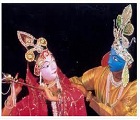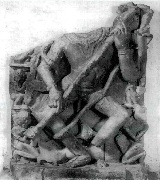News & Notes

Chhau in New york
Hamsa, whose swan-inspired grace on land and in the water Dubey sought to convey, did not resolve itself either in body or mind. It merely depicted a series of steps academically, without the inner dignity associated with the gander, as confident upon the earth as it is in the sky: the symbol of Maha Vishnu who revealed to Markandeya— I am the Gander. I am the Lord...— also of Brahma who traverses the heavens on this vahana of stainless spirituality. Mayura, the peacock, dancing in expectancy of the coming rains, reacting to the thunder and flashing lightning in the heavens, lacked those quicksilver shifts in moods and bird-like bodily accents,- the gestural lines of both arms and upper torso by Dubey were not clearly defined as they were in the past, in the New York showing of 1986.
Main Feature

Veena - Then and Now
There are numerous poetic descriptions of the instrument in all our literatures. In the Ramayana, Hanuman visits the seraglio of Ravana in his search for Seeta. There, at midnight, he sees many musicians asleep. The poet likens one of the women veena players embracing her instrument to a cluster of lotus stalks clinging to a boat in a river. Then there is the famous story of Prince Udayana who charmed Princess Vasavadatta by the music of his veena and, in the course of his wandering, even a wild elephant. Like the damaru with Siva and the flute with Krishna, the veena has also certain iconographic and occult significances. One of them is again in relation to Siva in the form of Dakshinamoorthy who is very often referred to as the Veenadhara Dakshinamoorthy.


